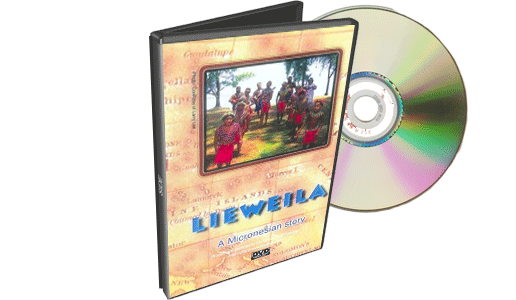
The sounds and sights of Carolinian culture
Who is Olomwaay?
Olomwaay (olom-why) is a Refaluwasch (Carolinian) word that means "Peace, God bless, and thank you." A long time ago, our great aunt Florencia Kaipat Seman, who was involved in creating the very first Carolinian dictionary, was asked if Carolinians had their own word for "thank you." (Carolinians typically used "ghilisow" (hili-so), which is actually Chuukese). When she mentioned the word Olomwaay, she was laughed at, and it was rejected because it sounded like another less socially acceptable word. She was a bit hurt by that. When she told me that story, I vowed to promote the word as much as possible in her honor. So it was my only choice when it came time to name our band and company."--Gus Kaipat"
*****
The Olomwaay Mission Statement
"It's our calling to share indigenous Refaluwasch and Chamorro music with the world.
We're also committed to preserving those cultures by telling our own stories."--Gus Kaipat
"'Lieweila' is a monumental treasure, the value of which will grow with time."
--Ramon G. Villagomez, former Justice, Commonwealth of the Northern Mariana Islands Supreme Court
Olomwaay DVD
"A spectacular visual and acoustical accomplishment!"

Lieweila: A Micronesian Story aka "The Carolinians on Saipan DVD
Lieweila: A Micronesian Story: Narrated by Cinta Kaipat, a descendant of the first migrants, "The film tells the history of Refalawasch beginning with details of the early migrations and ending with the current situation in which the people from the northern islands now live on a Saipan that has become a Mecca for tourism, cheap Asian labor, and land developers. In this environment, it is difficult for the story of Refalawasch to remain relevant, and yet, as the film shows, there is a continuing effort to keep the story alive. The film's narration is clear and personal. It is the voice of a woman who is part of the story and who works on behalf of her people's interest. Although I can hardly get past its personal appeal to me, I think the film has broad educational value, especially in the context of learning about the struggle of Pacific Island people to hold on to their traditions in the face of wave after wave of economic and cultural colonization."
--Fred Blake, Professor of Anthropology, University of Hawaii [Courtesy of the Landlocked Films website]
Order Now!
"We sold 2,000 copies in 3 days!
....And then we were banned from the airwaves!"*
— The Olomwaay Band
Olomwaay CDs
"We sold 2,000 copies in 3 days!
....And then we were banned from the airwaves!"*
....And then we were banned from the airwaves!"*

The Olomwaay Band! "She Gave us Love!" CD
The OLOMWAAY Band, formed in 1995, broke into the island music scene when it won the grand prize for the first annual Battle of the Bands in 1998... Solid as a bond - - But local fans simply know Olomwaay as the name of their favorite band that gave them the popular local hit She Gave Us Love. Experience the versatility and emotion of one of the best bands the South Pacific has to offer! *"...People were requesting it so often that the station manager at a local station had to limit how often it was played to be fair to the other artists."--Gus Kaipat, from a Saipan Tribune article
Order in your favorite format:
Click here to order both and save $3!
